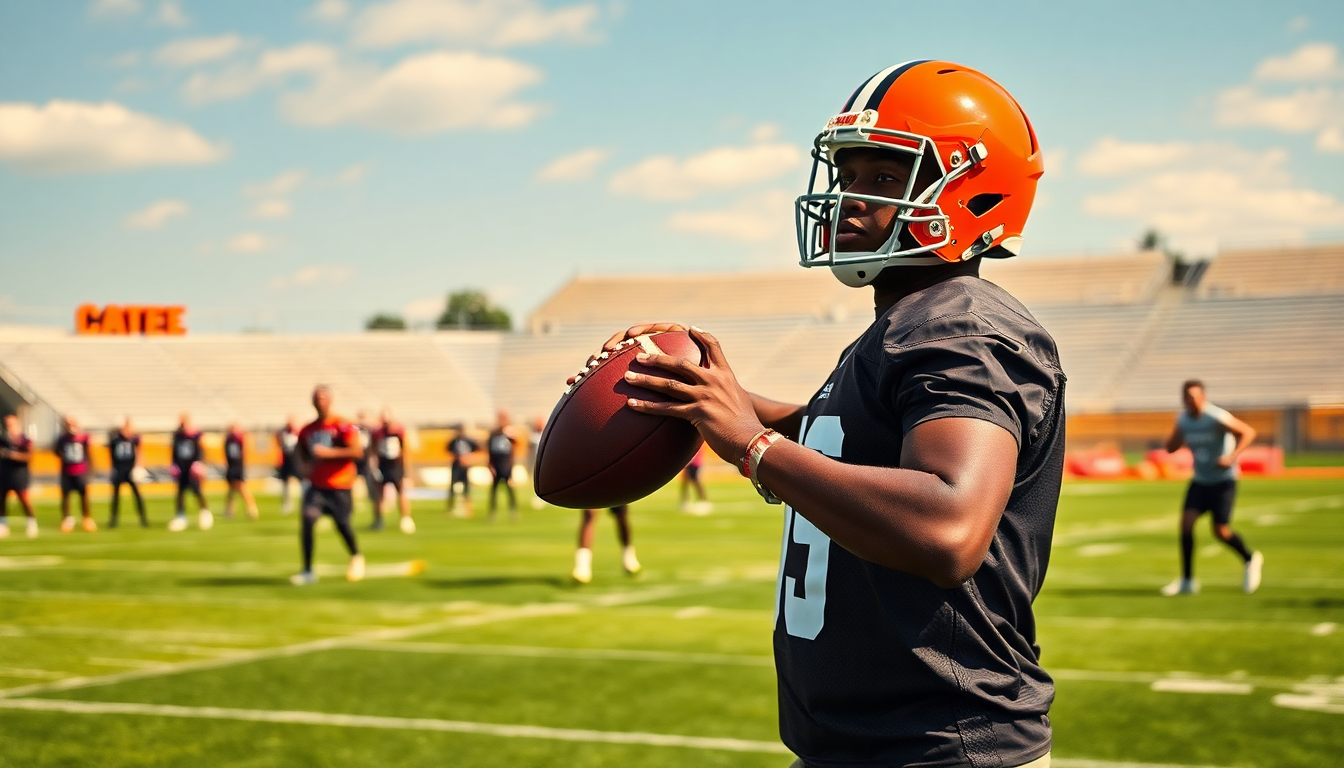Table of Contents
Shedeur Sanders’ recent comments about his determination to secure a spot on the Cleveland Browns’ 53-man roster have sparked quite a buzz. With a competitive quarterback lineup, Sanders currently sits third on the depth chart, trailing seasoned veteran Joe Flacco and fellow rookie Dillon Gabriel.
So, what does this mean for Sanders and the Browns? Let’s dive into the details, exploring insights from key figures, the implications for the team, and how this all fits into Sanders’ evolving career.
The Quarterback Landscape in Cleveland
As the NFL season kicks off, the Cleveland Browns are facing some critical choices about their quarterback lineup.
With Shedeur Sanders grabbing headlines, the dynamics have shifted, triggering discussions among fans and analysts alike. Jason McIntyre has pointed out the Browns’ quarterback situation, emphasizing that Sanders could be stepping into a key role. Travis Kelce, a well-known voice in the sports community, has even thrown his support behind Sanders during a recent episode of the “New Heights” podcast, advocating for the rookie to take the starting position.
Isn’t it exciting to see such strong backing from established players?
Kelce’s enthusiasm mirrors the growing excitement among fans eager to see Sanders showcase his skills. He remarked, “Give the people what they want,” highlighting the demand for fresh talent on the field.
However, Browns’ head coach Kevin Stefanski seems to prioritize experience, choosing Flacco as the starting quarterback to maximize their chances of winning games. But is this the right call?
This decision, while controversial, underscores the strategic hurdles NFL teams must navigate.
Balancing the nurturing of young talent while ensuring immediate performance is no small feat, and the Browns are certainly no exception. Insights from insiders like Jason Kelce, who emphasizes the need to see Sanders play, reveal the mixed feelings surrounding the choice of starting quarterback.
What would you do in their shoes?
Performance Scrutiny and Expectations
Sanders’ performance in the preseason has been under the microscope. After a tough outing against the Los Angeles Rams, where he completed just three of six passes and was sacked five times, many began to question the coaching staff’s strategy. Critics pointed to the challenging environment Sanders faced, suggesting he lacked the necessary support from backups. This sentiment echoed across social media, with many coming to Sanders’ defense, arguing that his struggles stemmed from the play-calling and overall team strategy. Do you think he was set up for success?
Former NFL quarterback Derek Carr raised a valid point about Sanders’ experience, noting a missed opportunity for him to lead a two-minute drill. Carr’s insights shed light on the importance of giving young quarterbacks critical reps, especially in high-pressure situations that can shape their growth. The criticism aimed at the Browns’ coaching staff also hints at a larger concern about how they are managing Sanders’ development as a player. It’s a tricky balance, isn’t it?
Moreover, contrasting narratives emerged following Sanders’ earlier preseason performance against the Carolina Panthers, where he threw two touchdowns. This shows just how volatile public perception can be. The expectations for Sanders are soaring, and any misstep tends to be magnified, creating a challenging landscape for the rookie. How can he navigate this pressure?
The Broader Implications for Sanders and the NFL
The conversations surrounding Shedeur Sanders extend far beyond the immediate context of the Browns. Former NFL players and analysts have raised eyebrows at the circumstances surrounding his draft position, suggesting possible external influences on team decisions. Eric Dickerson even made headlines with claims that teams were advised against drafting Sanders, hinting at systemic biases that echo other controversial moments in NFL history. What does this mean for the integrity of the league?
As the season unfolds, the implications of Sanders’ situation could resonate throughout the NFL. Comparisons to notable figures like Colin Kaepernick have surfaced, with critics suggesting that the hurdles faced by Sanders may reflect deeper issues within the league regarding talent evaluation and opportunity. The spotlight on Sanders not only impacts his career trajectory but also raises pressing questions about the league’s commitment to fairness and inclusivity in player opportunities. Isn’t it time for change?
In conclusion, Shedeur Sanders’ journey with the Cleveland Browns paints a vivid picture of the complexities of talent management, player development, and the systemic challenges within the NFL. As fans and analysts continue to debate his potential impact, this unfolding story serves as a reminder of the intricate dynamics at play in professional football. What are your thoughts on Sanders’ future?





